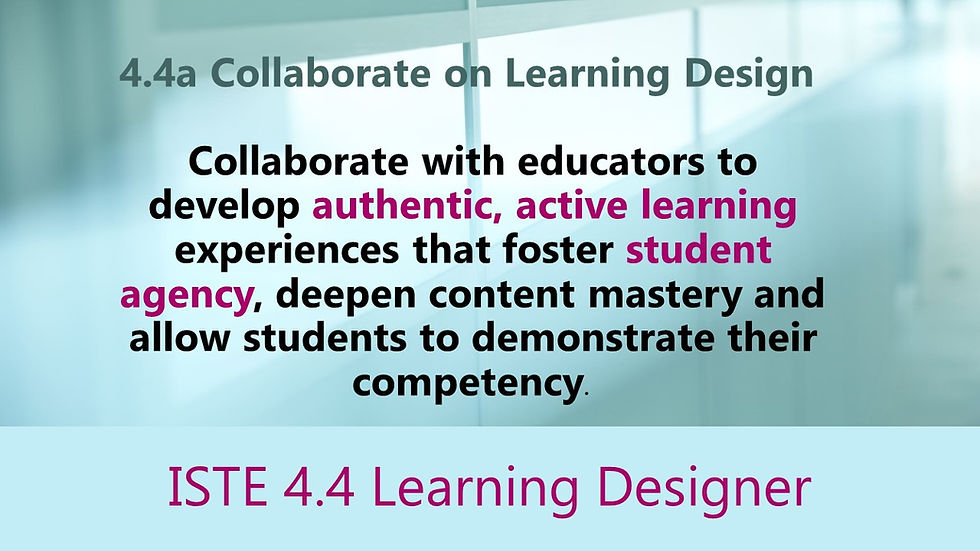Collaborate on Learning Design
- TEACHERCoaching

- Feb 19
- 2 min read
Coaches should support educators to coach students to set their own learning goals. The coach should also encourage educators to create engaging and practical learning experiences that reflect real-world experiences, and allow student’s knowledge and skills to be demonstrated in a variety of ways.

ISTE explains that coaches ‘should collaborate with educators to develop experiential learning activities that are designed based on students’ real-world experiences and interests, current issues or real data, and are implemented in a way that engages students (e.g. hands-on, debates, field-work etc). The learning experiences should encourage a level of autonomy and self-direction from students to take responsibility and ownership of learning goals. The coach should encourage a variety of ways for students to demonstrate their knowledge, skills and dispositions such as allowing them to choose a pace, schedule or work product/ artifact.’
Learning menus are a great option for allowing pupil choice and engaging with real-world problem solving that they feel will be most relevant to them. There are numerous ways to make content engaging for students. The following are for lessons on global warming but most of the suggestions could be adapted for any topic.
Pupils can go on virtual field trips
Pupils can study climate action in Minecraft Education
Pupils can use VR headsets and platforms such as Campus XR to learn more about animals affected by climate change
Pupils can write blogs on the subjects
Pupils can record podcasts on the subjects
Pupils can create videos on global warming using Flip
Pupils can create PowerPoints on global warming and present them
Pupils can research independently and share links via Wakelet
If a learning menu was created it would be useful if pupils were informed of the skills they were practising, the knowledge areas, and the level of challenge they would be facing, so that they can choose the learning activity most aligned with their learning goals.



Comments